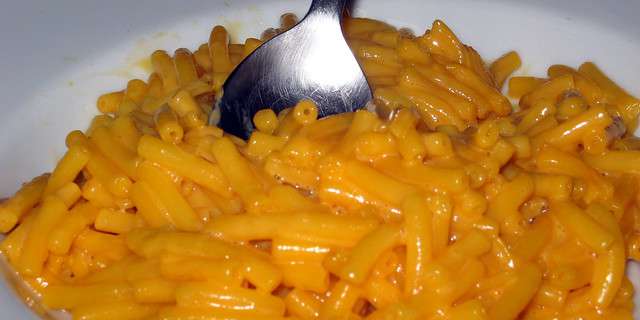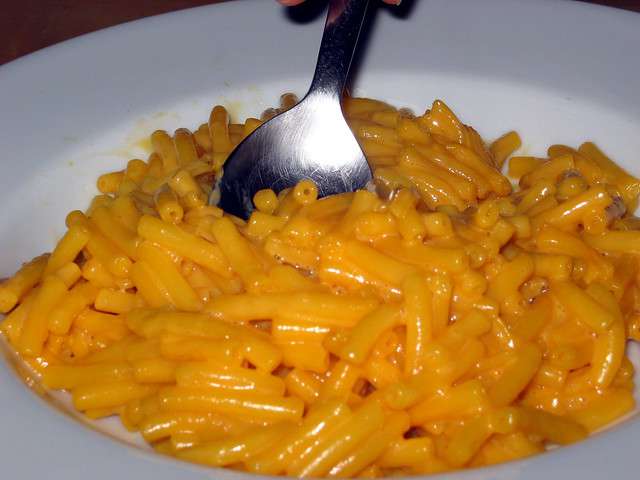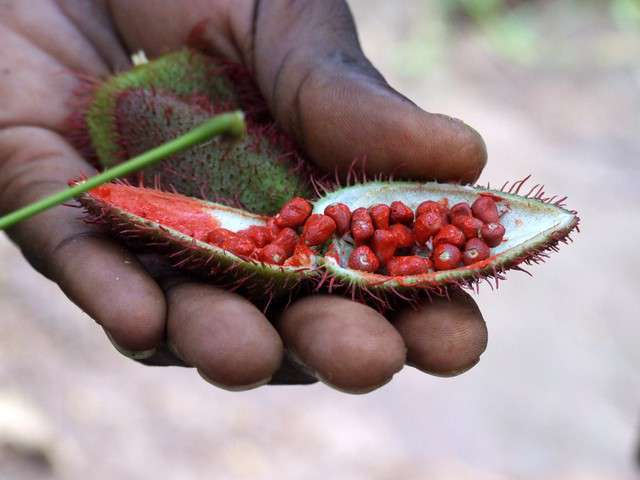
Every parent of a college student will understand that the student’s diet is probably heavy on pizza, ramen noodles, and macaroni & cheese. Parents who are concerned about this diet might take some comfort from Kraft’s recent decision to phase out artificial preservatives and synthetic colors from its ubiquitous mac & cheese products1. Yet any food processor’s decision to move toward natural ingredients will pose challenges that, if not handled properly, can affect the appearance, taste, and overall quality of food products.

The familiar orange-yellow elbow macaroni and cheese is a welcome site to many college students. And it’s always the same color. Image Source: Flickr User Aidan Morgan (CC BY 2.0)
To maintain consistent product color, a food processing company transitioning to natural food dyes and ingredients must adjust processing conditions in real time. Consider this challenge in the context of butter. Milk from dairy cows that are raised on artificial feed generates butter that is pale or white. Butter that starts out as milk from natural grass-fed cows is bright yellow2. So, a food processor that uses grass-fed butter is adding higher levels of yellow pigmentation to its food products. More importantly, that level varies with natural changes in the cow’s diet. The same is true for cheeses and other products that start out as milk. The challenge is compounded as other natural ingredients are utilized.



